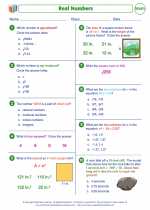Comparing Numbers
When we compare numbers, we are looking at their relative values and determining which is greater, less than, or equal to the other. This is an important concept in mathematics and is used in various mathematical operations and problem-solving situations.
Comparing Whole Numbers
When comparing whole numbers, we use the following symbols:
- Greater than: >
- Less than: <
- Equal to: =
For example, when comparing the numbers 7 and 4:
7 > 4 (7 is greater than 4)
4 < 7 (4 is less than 7)
7 > 7 (7 is equal to 7)
Comparing Decimals
When comparing decimals, we follow the same principles as with whole numbers. We compare the digits place by place, starting from the leftmost digit.
For example, when comparing 3.25 and 3.5:
3.25 < 3.5 (3.25 is less than 3.5)
Comparing Fractions
When comparing fractions, we can either convert them to a common denominator or use other strategies such as finding a common numerator. For example, when comparing 1/4 and 2/5:
1/4 < 2/5 (1/4 is less than 2/5)
Study Guide
To effectively compare numbers, it's important to remember the following key points:
- Use the appropriate comparison symbols: >, <, =
- For decimals and fractions, compare digit by digit, starting from the leftmost place value
- When comparing fractions, consider finding a common denominator or numerator to facilitate the comparison
- Practice comparing numbers through various exercises and problems to reinforce the concept
By mastering the skill of comparing numbers, you'll be better equipped to tackle more complex mathematical problems and operations.
.◂Math Worksheets and Study Guides Eighth Grade. Real numbers
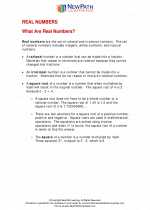
 Worksheet/Answer key
Worksheet/Answer key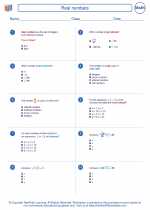
 Worksheet/Answer key
Worksheet/Answer key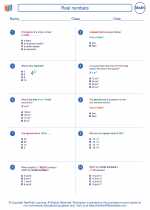
 Worksheet/Answer key
Worksheet/Answer key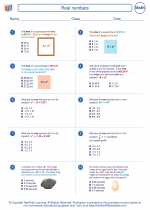
 Worksheet/Answer key
Worksheet/Answer key